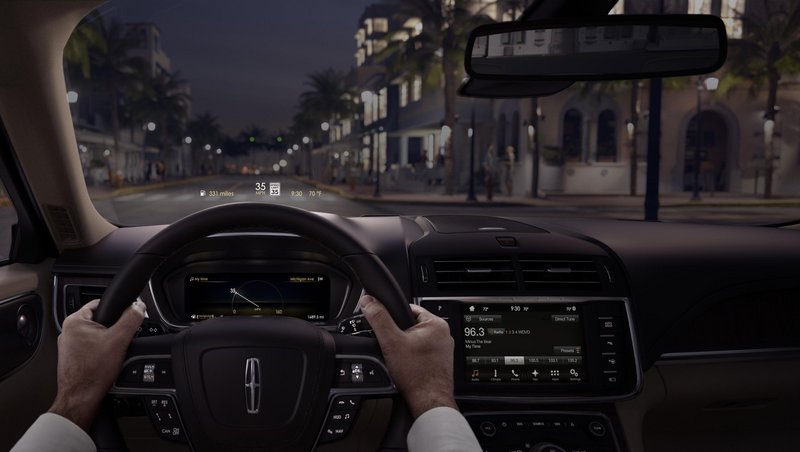Continental Head-Up Display with DMD Technology Goes into Production for the First Time with Lincoln
- Better image with a larger display surface in Lincoln Continental and Lincoln Navigator
- DMD technology as a bridge between head-up displays and augmented reality solutions
- Head-up displays prevent driver distraction and provide enhanced safety and comfort
Babenhausen, November 14, 2017. Automotive manufacturer Lincoln Motor Company, a division of Ford Motor Company is, for the first time, putting into production Continental’s head-up display with digital micromirror device (DMD) technology to allow drivers to communicate even better with their vehicles in the future. The solution from the technology company was first integrated into the 2017 Lincoln Continental, followed by the 2018 Lincoln Navigator. Head-up displays show all relevant information in the driver’s field of vision, reducing driver distraction and therefore making a significant contribution to enhanced comfort and safety. “It is a great achievement for the entire team that our digital micromirror device technology is going into production for the first time at Lincoln. Our solution closes the gap between the classic head-up display and augmented reality head-up displays and provides a better image with a larger display area,” says Dr. Frank Rabe, head of the Instrumentation & Driver HMI business unit at Continental.
Replacing previously used TFT LCD technology, the DMD generates graphical elements in the same way as digital cinema projectors, based on mirror optics and a picture generating unit (PGU). Thanks to an intermediate screen, sequential color management and a lens-based optical path, the image is brighter and sharper than with conventional head-up displays. The Lincoln head-up display is one of the brightest and largest in its class and allows drivers to see the display even through polarized sunglasses. Moreover, due to the increased display area, more information can be displayed, for example, from other elements of the holistic human-machine interface. These characteristics then enable Lincoln to reduce redundancy between the head-up display and cluster. The DMD technology also forms the basis for augmented reality head-up displays.
Head-up displays are a key technology in holistic human-machine interaction, enabling a wordless dialog between driver and vehicle, and displaying relevant information directly in the driver’s field of view depending on the driving situation. Drivers no longer have to look away from the road to read information from the instrument cluster, they look instead at the display on the windshield. This intuitive dialog between driver and vehicle is an important step on the road to automated driving.

Sebastian Fillenberg
Head of External Communications
Continental Automotive

